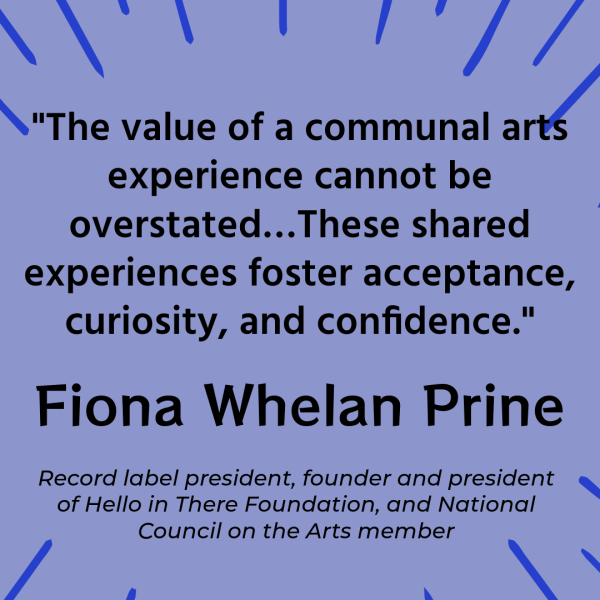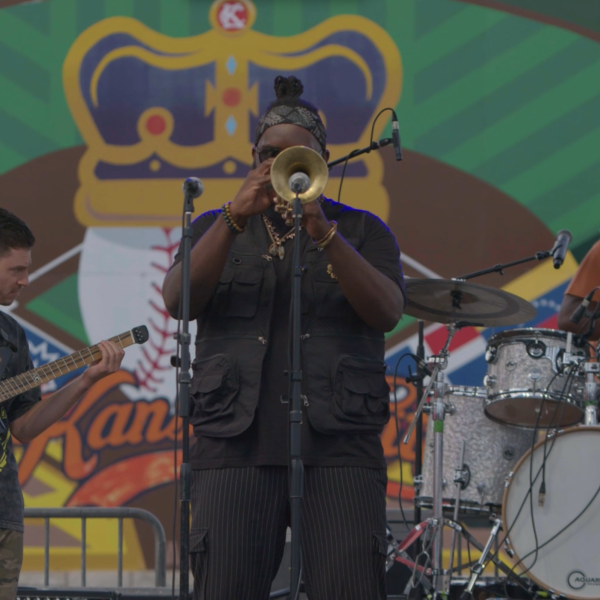New Survey Reports Size of Poetry’s Audience – Streaming Included

The Poetry Out Loud National Finals will be held May 8-10 in Washington, D.C. For those who can’t make it in person, the events will be livestreamed. Although hybrid attendance models are a byproduct of our COVID era, the contest has welcomed virtual audiences for years. The opportunity spotlights poetry’s living heritage as a spoken art form no less than a literary one.
It seems natural, then, to inquire about the size and demographics of poetry’s audience, in terms of listening via electronic or digital media. After all, the NEA’s Survey of Public Participation in the Arts (SPPA) has measured the nation’s rates of poetry-reading since 1982. Although early waves of the survey asked about poetry-listening—whether or not media were involved—more recent versions of the SPPA have included questions only about poetry-reading.
Now, just in time for National Poetry Month, we have some new data. Nearly 12 percent of U.S. adults read poetry or listened to it via media, according to early data from the 2022 SPPA, which features a question about poetry-listening through broadcasts, recordings, or web streaming. This number approximates the share of adults who read poetry in 2017.
Indeed, five years ago this week, I had blogged about statistics on poetry-reading, based on then-current findings from the SPPA, which we conduct periodically with the U.S. Census Bureau. At the time, I reported that between 2012 and 2017 the adult readership for poetry had grown from 6.7 percent to 11.7 percent.
The 2017 rate was also higher than the 8.3 percent of adults who had read poetry in 2008, but was comparable to the 2002 rate (12.1 percent). The gains between 2012 and 2017 were observed in men and women, across all racial/ethnic groups, and all age groups, though, in the case of younger adults (18-24-year-olds), the poetry-reading rate more than doubled.
According to the 2022 survey data, however, 9.2 percent of adults, representing 22.4 million, read poetry in the last year. While this rate is nearly three percentage points lower than five years earlier (2017), it remains slightly higher than the 2012 and 2008 levels. [Note: the trend calculations in this blog post have not been tested for statistical significance. This will occur prior to publication of a full report of the 2022 SPPA. The report will also feature participation rates for other art forms and genres.]
The story might have ended there, but in 2022 we added a survey question, based partly on anecdotal reports of the growing audience for poetry through web streaming and social media. That year, we now find, 4.8 percent of adults (11.8 million) listened to poetry via broadcasts, recordings, or web streaming. Further analysis shows that 11.5 percent of adults (over 29 million) either read poetry or listened to it in one of those ways.
Because the question about poetry-listening was new to 2022, the survey cannot tell us for certain whether greater opportunities to encounter poetry via video and audio streaming—even since 2017—have absorbed some of the traditional readership for poetry. It’s entirely possible that many poetry-readers of 2017 did not read poetry or listen to it via media in 2022.
Still, demographic data yield useful insights on how the poetry-reading group compares with those who listen to poetry via electronic or digital media. First, let’s try to understand how the decline in poetry readers from 2017 to 2022 was registered by different subgroups.
Poetry-Reading in 2022 vs. 2017: Demographic Differences
For starters, 18-to-24-year-olds, who, in 2017, exhibited the highest rate of poetry-reading of all age groups, lost half their share of the readership in 2022. That year, 9.0 percent read poetry, compared with 17.5 percent five years earlier. On the other hand, most of the 2017 cohort of 18-to-24-year-olds are now in the 25-to-34-year-old cohort—a group that saw little change in its poetry-reading rate from 2017: 12.3 percent that year, versus 11.9 percent in 2022. The relatively lower rates of poetry-reading among 18-to-24-year-olds in 2022 may be attributed to a cohort never before included in the adult survey.
The other age group that experienced a major decline in poetry-reading, from 2017 to 2022, consisted of the nation’s oldest adults. The reading rate of those 75 years of age and older was 11.0 percent in 2017, and 7.1 percent in 2022.
As for other demographic groups, African Americans in 2022 read poetry at rate of 8.3 percent, down from 15.3 percent in 2017, when they had shown the highest rate of any racial/ethnic group. Hispanics saw their poetry-reading rates slip from 9.7 percent in 2017 to 6.5 percent in 2022. The reading rate for Asians, non-Hispanic whites, and adults from “other” racial/ethnic backgrounds also fell since 2017, but, for all these groups, it hovered at 10 percent in 2022.
Now let’s turn to the demographic data for adults who listened to poetry broadcasts, recordings, or video or audio streams. Again, because the related survey question was new to 2022, we lack the ability to make comparisons with 2017 data. Even so, a 2022 snapshot of the demographic characteristics of the two groups—poetry-readers and poetry-listeners—exposes some key differences.
Comparing Poetry-Readers with Poetry-Listeners
As we have seen, the youngest adults were, in 2022, no longer the most likely age group to read poetry, as their rate was roughly equivalent to the 9.2 percent of all adults who did this activity. Yet these adults (18-to-24-year-olds), listened to poetry at a slightly higher rate than did adults in general (6.2 percent versus 4.8 percent). Adults 25 to-34 years old appear to have listened to poetry at the highest rate of all age groups: 7.1 percent.
Similarly, African Americans, who in 2017 read poetry at the highest rate of any racial/ethnic group, and who saw a decline in their readership in 2022, nonetheless report higher levels of poetry-listening than other racial/ethnic groups. That is, 7.6 percent of African Americans listened to poems via media—a figure comparable with the 8.3 percent of them who read poetry in 2022.
Some other demographic differences between poetry-readers and poetry-listeners are worth sharing. Although, in 2017 and 2022 alike, poetry-reading rates generally increased with adults’ levels of education, the same is not wholly true of poetry-listeners.
Based on preliminary results from the 2022 survey, adults with only some high school education who listened to poetry did so at a 6.3 percent rate. That’s higher than the listening rate of adults who only finished grammar school (2.0 percent), but also higher than for adults who graduated from high school (3.3 percent), and apparently higher than their own rate of poetry-reading (4.7 percent).
Further, while urban and rural dwellers have similar rates of poetry-reading (around 8 or 9 percent), poetry-listening via media appears more common among urban than rural dwellers (5.1 percent versus 2.8 percent).
Other Literary Arts Activities
The SPPA also features questions about attending spoken-word activities such as poetry slams, author readings, and storytelling events. In addition, the survey asks about adults’ participation in creative writing. Analysis of data from those survey questions—though they do not permit disaggregation of results for poetry engagement—should provide a richer portrait of the phenomena sketched here. Further stats will show how trends have fared for the reading of novels and short stories, plays, and books in general. Expect more data and analysis in the months to come!
Sunil Iyengar directs the Office of Research & Analysis at the National Endowment for the Arts




